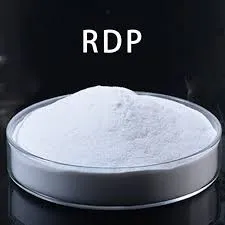
Nov . 27, 2024 10:14 Back to list
HPMC Powder Price Trends and Market Analysis for 2023
The Market Dynamics of HPMC Powder Prices
Hydroxypropyl Methylcellulose (HPMC) powder, a versatile cellulose ether, plays a crucial role across various industries, including pharmaceuticals, cosmetics, construction, and food. Understanding the factors that influence HPMC powder prices is vital for manufacturers, suppliers, and consumers alike, as these fluctuations can significantly impact production costs and market strategies.
Overview of HPMC Powder
HPMC is a water-soluble polymer derived from natural cellulose. It is commonly used as a thickening agent, binder, and emulsifier. In the construction industry, HPMC enhances the workability of cement-based products and improves adhesive properties. In the pharmaceutical sector, it acts as a stabilizer and controlled-release agent in drug formulations. Its applications in food products include serving as a fat replacer and a texture enhancer. Given its wide-ranging utility, the demand for HPMC powder remains consistently high.
Factors Influencing HPMC Powder Prices
1. Raw Material Costs The production of HPMC powder involves cellulose, derived from wood pulp or cotton. Fluctuations in the prices of these raw materials can significantly affect HPMC prices. For instance, if the market experiences a wood pulp shortage or an increase in cotton prices, HPMC manufacturers may face higher production costs, ultimately passing these costs onto consumers.
2. Production Capacity and Technology Advances in manufacturing technology can impact HPMC production efficiency and costs. Facilities that employ cutting-edge technology may be able to produce HPMC more cost-effectively, allowing for competitive pricing. Conversely, plants with outdated machinery may struggle with high production costs, leading to higher market prices for their HPMC products.
hpmc powder price

3. Global Supply Chain Dynamics The globalization of the supply chain plays a critical role in HPMC pricing. Disruptions due to geopolitical tensions, trade restrictions, or natural disasters can lead to increased shipping costs and delays, thereby affecting the availability and price of HPMC powder. Manufacturers reliant on imported raw materials or finished products are particularly vulnerable to such fluctuations.
4. Market Demand The demand for HPMC powder is subject to seasonal fluctuations and market trends. For example, in the construction industry, demand may rise during certain seasons, leading to price surges. Similarly, any significant trend towards natural and organic products in industries like food and cosmetics can lead to an increased demand for HPMC, driving prices higher.
5. Economic Conditions The overall state of the economy can profoundly influence HPMC powder prices. In a robust economic environment, increased construction and manufacturing activities typically create higher demand for HPMC, leading to price increases. Conversely, during economic downturns, demand may shrink, leading to reduced prices as suppliers vie for business.
6. Regulatory Factors Changes in regulations regarding the use of HPMC in various industries can also impact prices. Stricter regulations might increase production costs for manufacturers who need to meet new safety or quality standards. Compliance costs may lead to higher prices, which will be reflected in the market.
Conclusion
In summary, the pricing of HPMC powder is influenced by a complex interplay of raw material costs, technological advancements, global supply chain factors, market demand dynamics, economic conditions, and regulatory changes. For businesses operating within industries that rely heavily on HPMC, staying informed about market trends and potential price fluctuations is essential for strategic planning and maintaining competitiveness. As the market continues to evolve, ongoing analysis of these factors will be crucial for navigating the complexities of HPMC pricing and ensuring sustainable growth. Understanding these dynamics can aid stakeholders in making informed decisions and adapting to the ever-changing landscape of the HPMC market.
-
HPMC for Tile Adhesive: Superior Bonding & Workability
NewsAug.30,2025
-
Premium Cellulose Ether: Effective Liquid Thickener Solutions
NewsAug.29,2025
-
HPMC for Tile Adhesive: Enhanced Bonding & Workability
NewsAug.28,2025
-
tile-bonding-additives-for-stronger-bonds
NewsAug.22,2025
-
construction-grade-rdp-for-wholesale-needs
NewsAug.22,2025
-
trusted-hec-supplier
NewsAug.22,2025







